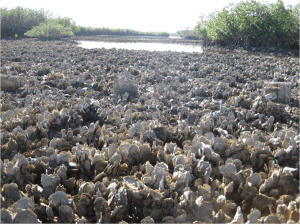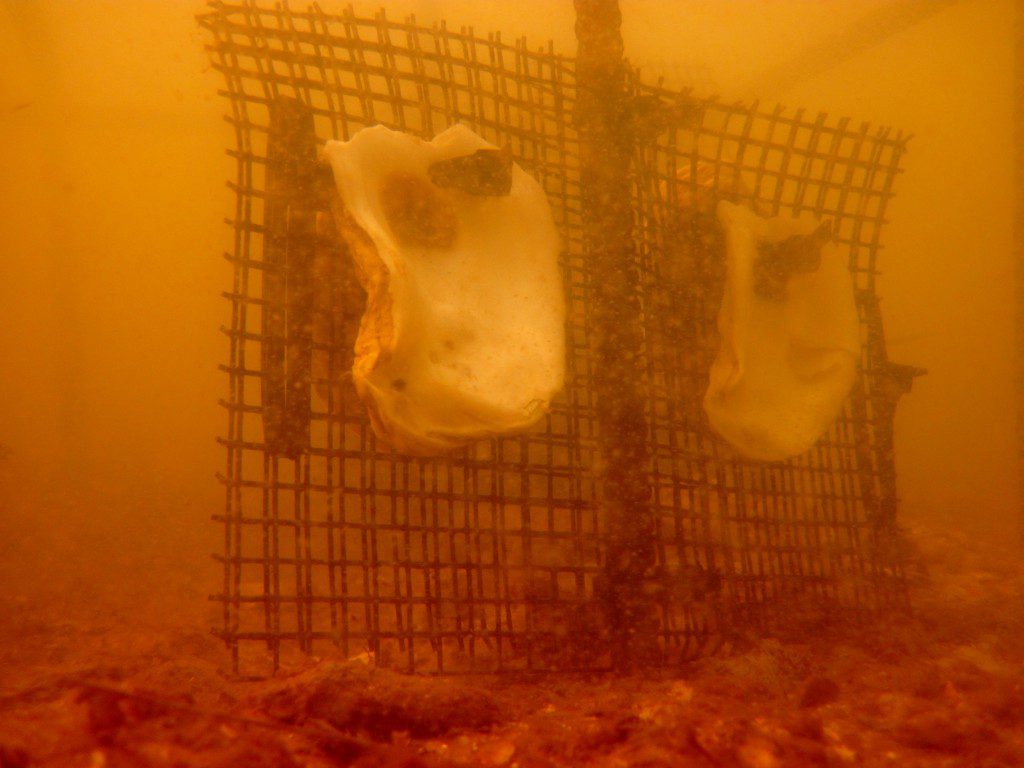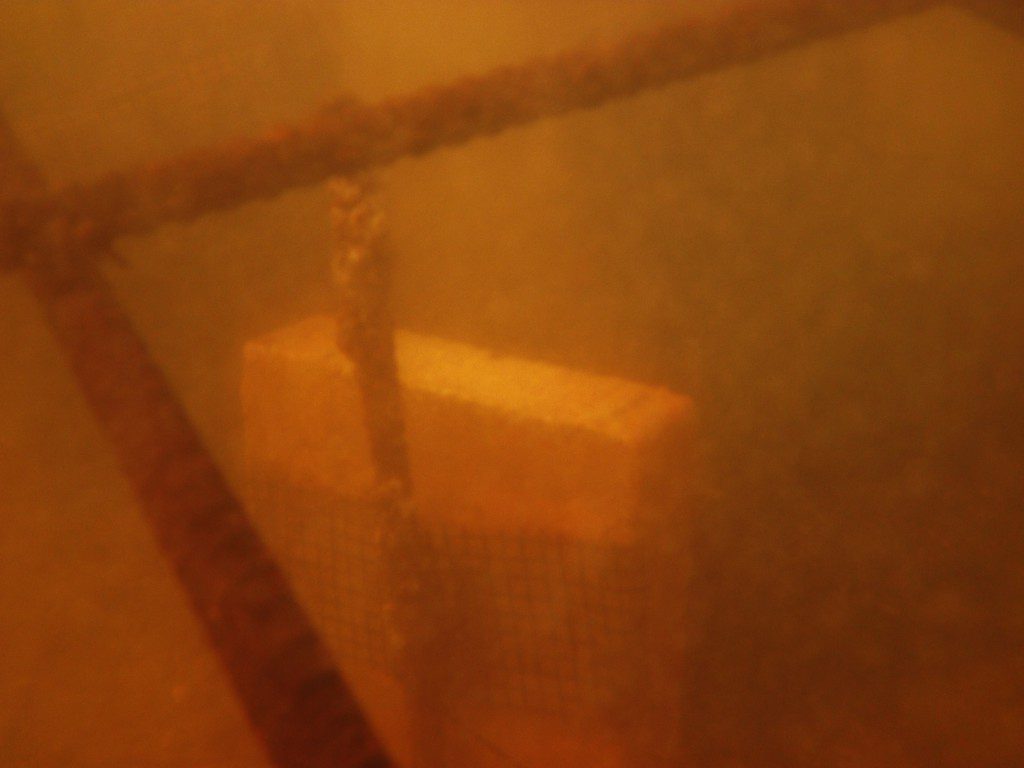Meagan Murdock is a lab technician in the Hughes and Kimbro Labs, operating out of the FSU Coastal and Marine Laboratory. The experiment she describes in the following post is a central staple in the research conducted by Dr. Randall Hughes and Dr. David Kimbro into oyster reef ecology. They seek to measure factors affecting the health of an oyster at a given location by monitoring the growth of young oysters (spat) in a controlled unit- the spat tile. We’ll be further exploring the use of spat tiles in their NSF funded oystern study in the next couple of weeks. David Kimbro is also gearing up to deploy a tile experiment in Apalachicola Bay, with the goal of measuring conditions there (see photo below).
Meagan Murdock FSU Coastal & Marine Lab

Beautiful reef backing up to red mangroves (Rhizophora mangle) in Mosquito Lagoon, FL. Notice our experiment on the reef!
Mosquito Lagoon of Canaveral National Seashore is in the northern section of possibly the most diverse estuary in North America, the Indian River Lagoon. But don’t let the name “Mosquito” Lagoon scare you off! This lagoon is an expanse of mangrove islands, oyster beds, and home to charismatic animals like manatees and dolphins (maybe a few mosquitoes, but where in Florida can you not find mosquitoes??). Eight months ago, we set up a rendition of the “Tile Experiment” at three National Park Service units in hopes of elucidating factors contributing to oyster spat (spat=newly settled oyster) survival and growth. Last week we ventured out to Mosquito Lagoon to check on our baby oysters and this is what I found. The tiles were covered in BARNACLES!
I felt bad for the little oysters. Not only are these spat expected to survive through adverse environmental conditions and hope they do not become some crab or fish’s dinner, but they also are competing for space and resources with other filter feeders. Geez it must be tough being an oyster! But-yeehaw!-the oysters are persevering and I got to enjoy the nice weather of Central Florida.
As Meagan continues to monitor the growth of her Canaveral oysters, David is having Stephanie Buhler and Hanna Garland deploy some test tiles in the subtidal (always submerged) oyster reefs of Apalachicola Bay. The tiles will be protected by a steel cage which will allow access to researchers while protecting the experiment from an oysterman’s tongs. Different prototypes of tiles and cages were deployed last week with the full experiment to begin in the coming weeks:
In the Grass, On the Reef is funded by a grant from the National Science Foundation.





2 comments
[…] […]
[…] need to figure this out soon, because we see the same pattern south of Matanzas at Cape Canaveral. In addition, I saw conchs overwhelming the intertidal reefs of Apalachicola last fall. While these […]
Comments are closed.